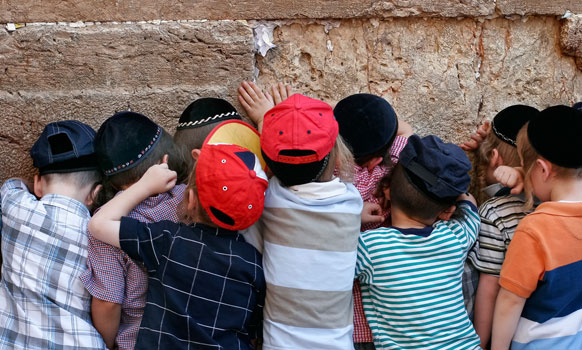Fast Facts About Tu B’Av: A Jewish Valentine’s Day?
Tonight begins the joyful minor holiday of Tu b’Av, the fifteenth of the month of Av. The Talmud says besides Yom Kippur, there was no other holy day as happy for the Jews as Tu b’Av. In the times of the Temple, unmarried Jewish women would dress in white and dance in the vineyards, as that it marked the start of the grape harvest. While in modern day the only official traditions we keep are to omit Tachanun and that a couple marrying on Tu b’Av do not fast. Unofficially, it is a celebration of love akin to Valentine’s Day. So other than being a happy occasion to celebrate after the tragedies of the Three Weeks and Tisha b’Av, what makes this one of the happiest days of the year?
- On Tu b’Av of the 40th year of wandering the desert, female orphans (such as the Daughters of Tzelaphchad) who once could only marry within their own tribe, could now marry into other tribes.
- On the same year, the decree of Jews dying for the sin of the meraglim (spies) was lifted and the Jewish men who had been lying in their dug graves, waiting to die, realized they had been spared and were allowed to live.
- The Tribe of Benjamin was finally allowed to marry into other tribes.
- Woodcutting for the Temple’s main altar ended for the year on this day.
- King Hoshea removed blockades that prevented people from attending the pilgrimage festivals in Jerusalem.
- The Romans allowed the massacre victims of the Bar Kochba Revolt to be buried, more than a year after their Tisha b’Av murder the year before. Miraculously, their bodies did not decompose.
It is customary now to add to one’s evening Torah Study starting on Tu b’Av, since nights officially become longer now as we move further away from the summer solstice. It is also the end of the year for planting and the beginning of the days of judgement, as that it means Elul is right around the corner.
It is in this spirit of forgiveness for the sin of the meraglim and our hope for the days of teshuva ahead that girls wore white as on Yom Kippur and celebrated with dance. With a renewed sense of life, unmarried men would go to the vineyards and choose a wife. In addition, the fact that the holiday takes place when the moon is full is an auspicious time for the Jews, who are compared to the moon. Just like Sukkos and Pesach are regarded as times when Hashem’s kindness is shown to us, so too on Tu b’Av. For this reason and the ones listed above, many weddings, proposals and dates take place on this day as well. Consider all of this joy occurring in what the Talmud is the month in the Jewish calendar where joy decreases! May our simcha only go up from here!
If you found this content meaningful and want to help further our mission through our Keter, Makom, and Tikun branches, please consider becoming a Change Maker today.







